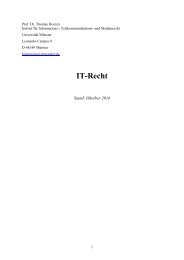3d4yVkKMl
3d4yVkKMl
3d4yVkKMl
Create successful ePaper yourself
Turn your PDF publications into a flip-book with our unique Google optimized e-Paper software.
- 57 -<br />
seasons), because it would be “highly uncertain” to detect a trend on the basis of only two data<br />
points. Japan also refers to the desirability of detecting change “as promptly as possible”. In the<br />
oral proceedings, Japan offered two different rationales for the six-year period. After initially<br />
suggesting that the six-year period was intended to coincide with JARPA II’s six-year review by<br />
the Scientific Committee, Japan withdrew that explanation and asserted that the six-year period for<br />
minke whales was chosen because it “coincides with the review period for the RMP”. This<br />
corresponds to the explanation given by the expert called by Japan, Mr. Walløe, in his oral<br />
testimony, although Mr. Walløe also described the use of a six-year period to calculate sample<br />
sizes as “arbitrary”.<br />
193. In light of the evidence, the Court has no basis to conclude that a six-year research<br />
period for minke whales is not reasonable in relation to achieving the programme’s objectives.<br />
However, the Court finds it problematic that, first, the JARPA II Research Plan does not explain<br />
the reason for choosing a six-year period for one of the whale species (minke whales) and,<br />
secondly, Japan did not offer a consistent explanation during these proceedings for the decision to<br />
use that research period to calculate the minke whale sample size.<br />
194. Moreover, Japan does not address how disparate research time frames for the three<br />
whale species are compatible with JARPA II’s research objectives relating to ecosystem modelling<br />
and multi-species competition. JARPA II is apparently designed so that statistically useful<br />
information regarding fin and humpback whales will only be available after 12 years of research<br />
(and the evidence indicates that, even after 12 years, sample sizes would be insufficient to be<br />
statistically reliable based on the minimum requirements set forth in the JARPA II Research Plan).<br />
As noted above (see paragraph 181), this casts doubt on whether it will be meaningful to review the<br />
programme in respect of its two primary objectives after six years of operation, which, in turn,<br />
casts doubt on whether the minke whale target sample size is reasonable in relation to achieving the<br />
programme’s objectives.<br />
195. The Court thus identifies two overarching concerns with regard to the minke whale<br />
sample size. First, Figure 5-4 shows that the final sample size of 850 minke whales (plus or minus<br />
10 per cent) falls within a range derived from the individual sample sizes for various research<br />
items, but there is a lack of transparency regarding the decisions made in selecting those individual<br />
sample sizes. The Court notes that a lack of transparency in the JARPA II Research Plan and in<br />
Japan’s subsequent efforts to defend the JARPA II sample size do not necessarily demonstrate that<br />
the decisions made with regard to particular research items lack scientific justification. In the<br />
context of Article VIII, however, the evidence regarding the selection of a minimum sample size<br />
should allow one to understand why that sample size is reasonable in relation to achieving the<br />
programme’s objectives, when compared with other possible sample sizes that would require<br />
killing far fewer whales. The absence of such evidence in connection with most of the sample size



